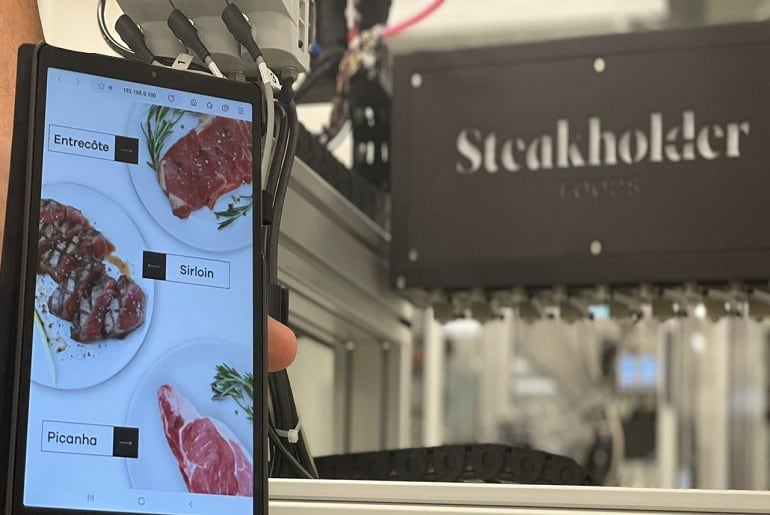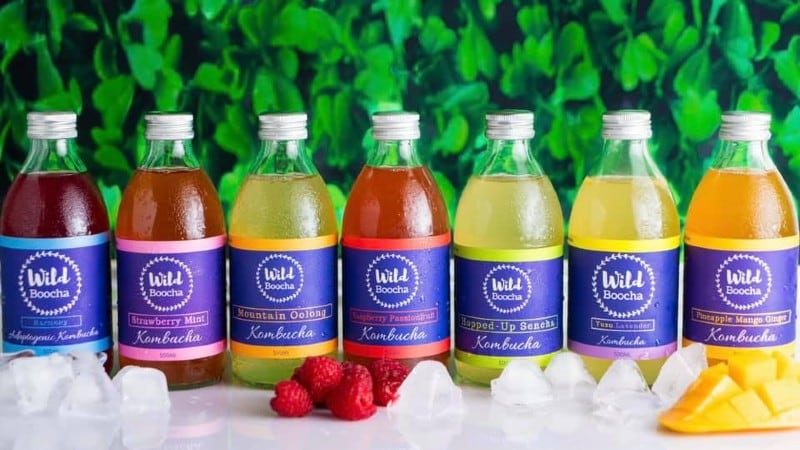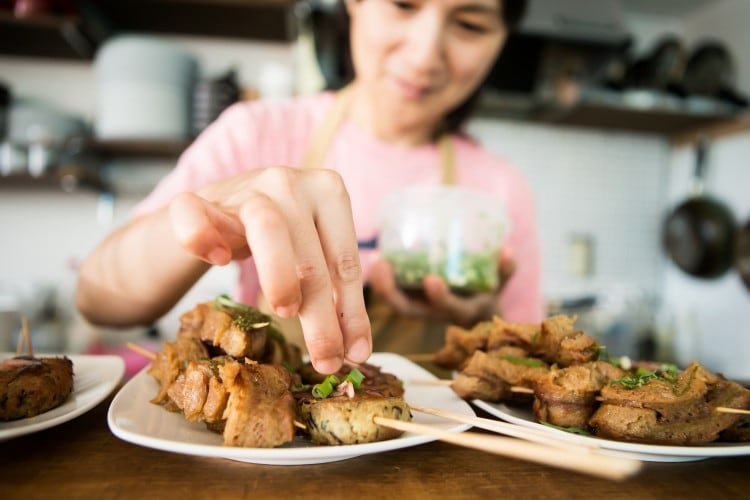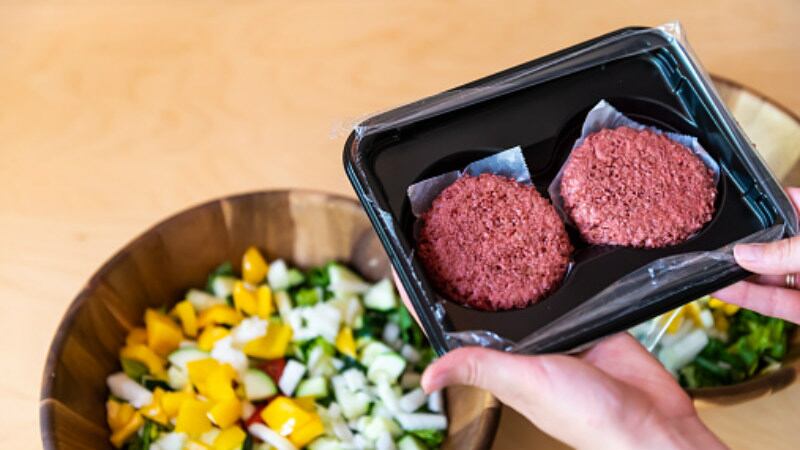Eight months after launching its marbled cultured beef product, it recently debuted a ready-to-cook cultivated grouper fish product – utilising grouper cells provided by its Singapore counterpart Umami Meats – at a tasting event in Israel.
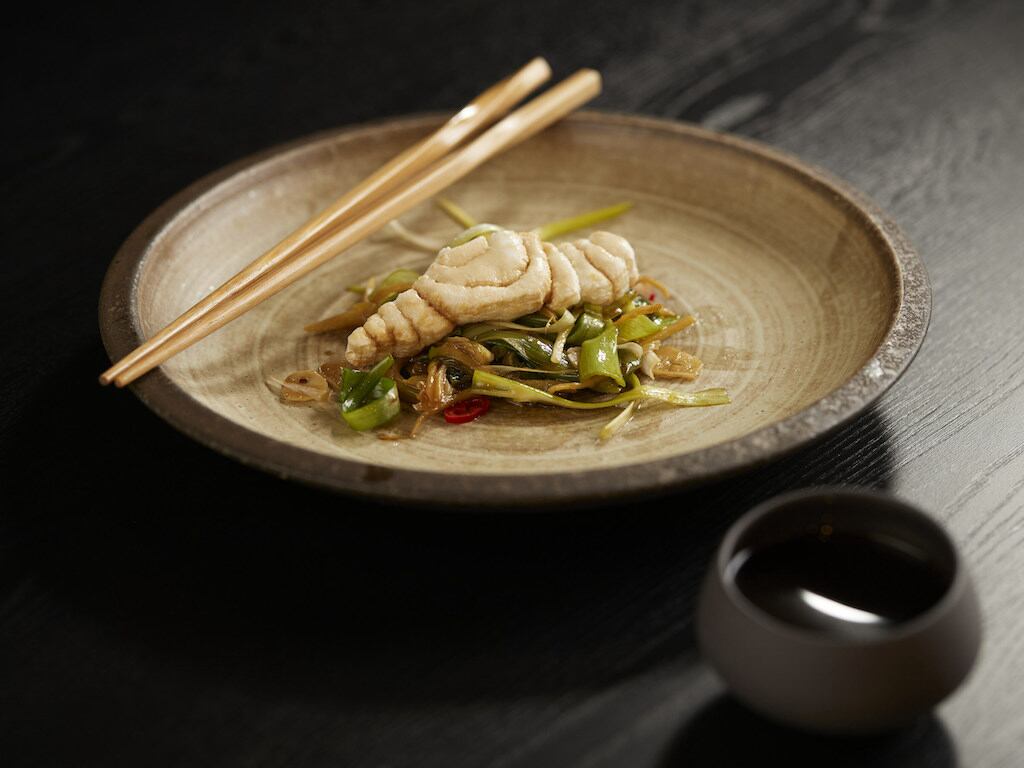
After the meat has been cultivated with animal cells inside a bioreactor, 3D printing is then used to regulate the nutritional content, as well as to provide a more realistic texture.
Speaking to FoodNavigator-Asia, Steakholder Foods’ co-founder and CEO Arik Kaufman explained that it wanted to expand its portfolio to demonstrate its capabilities in both 3D printing diversified species, and partnering with different industry players – spanning cultivated meat start-ups to larger, traditional meat or fish producers.
Kaufman added that the partnership with Umami Meats was in part fuelled by a grant received through a collaboration between the Singapore and Israeli innovation authorities.
Revamped partnership strategy
Targeting food companies looking to launch end products, Steakholder Foods plans to commence sales for its first printers next year, alongside complementary products and services such as its proprietary beef and avian cell lines.
“Aside from selling our products, there is a possibility of partnering more on a strategic level with respect to producing new printers designed for certain sectors. For instance, if there is a company that wants to 3D print certain seafood and they have their advantages, I can see ourselves partnering with a strategic player to develop a niche printer,” said Kaufman.
Kaufman said that “B2C model does not make sense today in current market conditions,” and its business model would evolve with the regulatory and economic landscape for cultivated meat.
“In the beginning, we wanted to solve everything from developing the cell lines and medium in-house and selling [directly] to end customers. I think we’ve matured and understand today that we cannot solve everything with our own resources and amid current market conditions.
“I think our edge lies in our printing capabilities. Currently, I’m not aware of any other companies that has both the hardware and software capabilities to develop complex cultivated meat or fish products.”
In this regard, it closed its Belgain subsidiary Peace of Meat (PoM) that was specialising in cultured fat, claiming in its press statement that it wanted to “focus its efforts [on] the advancement of its core technology 3D printing of cultured products, and potential collaborations.”
“After a few years [since acquisition], we needed to reassess what we should focus on given the current market environment. We wanted to leverage on our edge with respect to the printing capabilities which is the strategy for Steakholder Foods in the near future. We’re aiming to partner with different players that can be like very small start-ups to food giants of the world’s history,” he elaborated.
Remaining challenges in the industry
Kaufman beleives that Steakholder Foods has an edge when it comes to owning the intellectual property (IP) rights to their technologies.
“If we look at other companies that came out of universities or collaboration between two companies, the IP is not theirs. They’re either linked to royalties or joined in the license. Everything we developed from the beginning was developed with the mindset of covering them through patents.
“I think that as this industry evolve, we will see first products entering the market and the revenue stream that will come from these products. The IP that is linked to the development of these products will be very significant. And I think that there we have a very thin edge in this.”
It claimed to have five out of eight patent applications approved currently.
Its cultivated fish was a hybrid product made with cultivated and plant-based ingredients, and takes about three minutes to print, said Kaufman. He added that the industrial scale printers can achieve that within less than a minute.
Watch the video to find out more about Steakholder Foods' 3D printing capabilities:
While it is unable to disclose the cost of production at this point, it said that the industry has “reached an advanced point that the more significant challenges linked to technology are behind us” and the key challenge is refining the cultivated meat products.
It added that it foresees 2028 as the year the whole industry will reach cost parity.
“The first products to enter the market are those with a low technological complexity – meaning they will contain some cultivated meat mixed with plant-based ingredients. The next generation will see more complex products, either containing a higher percentage of cultivated ingredients or separating muscle and fat tissues. The marbling or flakiness will be more advanced,” Kaufman said.

